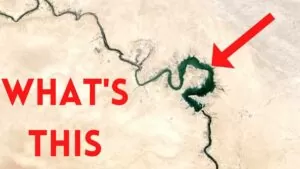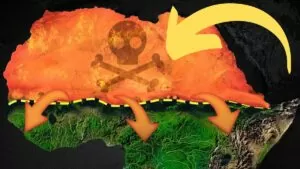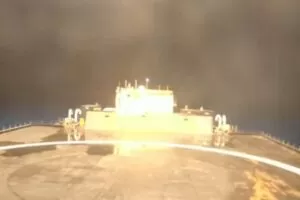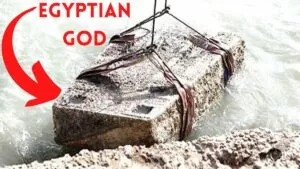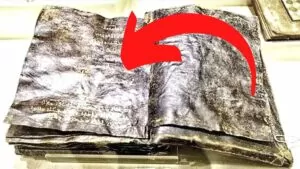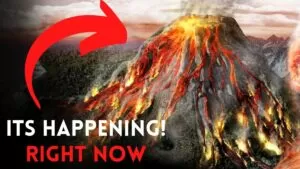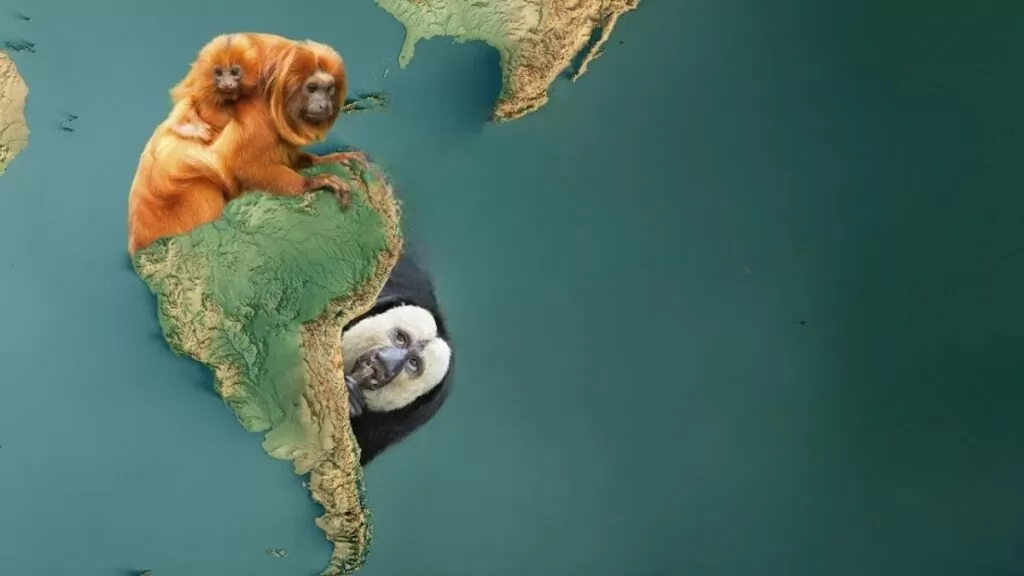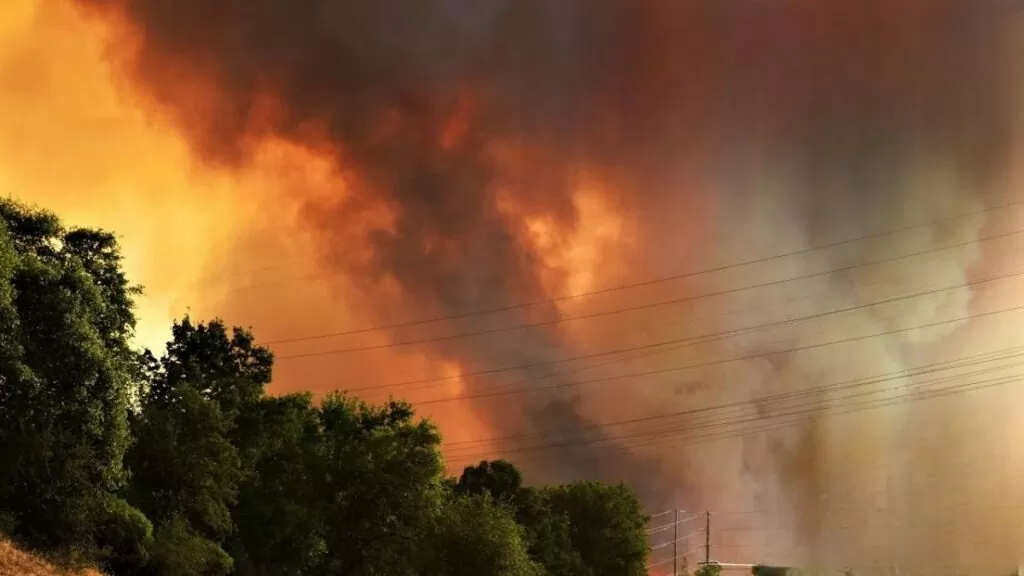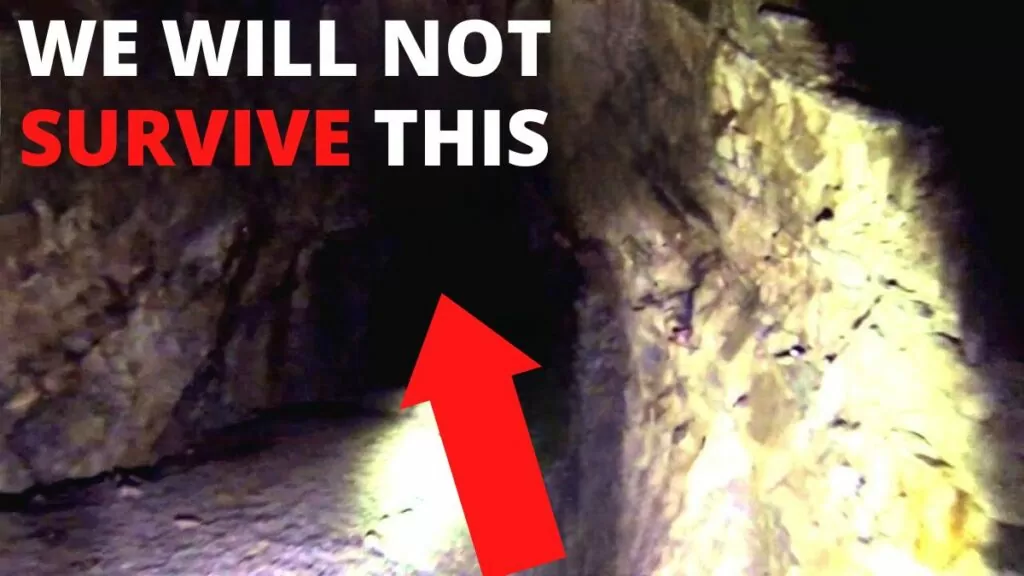
The longest river in Western Asia is the Euphrates.
There are three countries along the river’s rim: Iraq, Syria, and Turkey share its basin, which is shared by five nations with an estimated 23 million inhabitants.
However, the river is not in good shape; It is disappearing so quickly that scientists are shocked.
- Scientists Just Made A Terrifying Discovery In The Euphrate River
- 8 MINUTES AGO: Scientists Just Decoded This Ancient Egyptian Tablet
- This Alien Stone in Egyptian Desert is the 1st Physical Evidence of a Rare Supernova!
The prophecies associated with the Euphrates’ drying up in the world’s major religions are more serious than the decreasing flow of water.
The Euphrates River, which is almost dry and has a Bible verse about it that talks about four fallen angels after it has dried up, is being watched by many Christians.
So, is the imminent fulfillment of Revelation’s passages the reason the historical Euphrates River is drying up, or is there another factor we should be aware of?
What implications does this have for human destiny?
Make sure you stick around until the very end to learn everything there is to know about this most recent revelation.
Along the Euphrates’ banks, numerous civilizations have flourished, particularly in ancient times.
The Mesopotamian Empire was one of the region’s most notable civilizations.
Between the rivers Euphrates and Tigris, ancient Mesopotamia was known as the “Fertile Crescent.”
Iraq is the current name for that region of the world.
With 1,740 miles, the river is the longest in Western Asia.
It flows toward the Persian Gulf from eastern Turkey and travels through Turkey, Syria, and Iraq on its way there.
The various vegetation zones traversed by the Euphrates River are numerous.
The majority of the Euphrates basin’s landscapes have been significantly altered by human activity over millennia, but ancient flora remains.
Given the current state of the river, it may be difficult to believe that this section of the river was once a model of water management in Babylon.
Cyrus the Great’s army marched through Babylon and came to the canals built between the Tigris and the Euphrates to move the Euphrates’ water, which would otherwise drown the entire neighboring country when the Armenian mountains’ snow melted.
Numerous enormous canals the size of rivers intersected the valley that connected the Euphrates and Tigris rivers.
Every region of the country received adequate watering.
Crop transport was another use for the canals.
Religious warriors also used the river to spread Islam across the Middle East.
In the year 656, Ali Ibn Abi Talib, the son-in-law of the prophet Muhammad, moved the capital of his caliphate from Medina to Kufa, which is on the Euphrates River, south of Babylon.
On both banks, Kufa’s fertile wheat, date palm, rice, and other crop fields extended for miles.
The Euphrates has been at the center of the identities of many Iraqi cities for millennia, right up until the present day.
Take, for instance, Fallujah, whose advantageous location on the river attracted a slew of invaders in the third century A.D., from the Persians to the Romans. Arabian caravans stopped in Fallujah on their way to the Mediterranean to water their camels in the river.
However, experts are making grim predictions for the river.
The Euphrates and Tigris rivers in Iraq will run dry within two decades if nothing is done, according to research conducted by the water ministry.
Unfortunately, up to 98% of Iraq’s surface water comes from these two rivers.
Indeed, by 2040, Iraq may no longer have any rivers.
But precisely what is resulting in the Euphrates River’s depletion?
It’s a complicated situation, but a water crisis that threatens the livelihoods of millions of people in the region has been caused by conflict, climate change, and indiscriminate dam construction in neighboring nations.
According to Berkeley Earth, a California-based non-profit focused on climate research, Iraq’s annual temperatures are rising roughly twice as fast as the global average.
Since the late 1800s, the world has warmed by an average of 1.3 degrees Celsius, but Iraq has warmed by a staggering 2.5 degrees Celsius.
On the other hand, the human-caused component of the Euphrates’ problems starts more than 1,000 kilometers upstream, near the river’s catchment area in Eastern Turkey, below the Taurus Mountains.
The Turkish government has been constructing dams to develop agricultural land and generate power for years.
The Ataturk Dam was completed in 1990, while the Keban Dam on the upper Euphrates was constructed in 1974.
On the Tigris and Euphrates rivers, a 32-billion-dollar project to construct 22 dams and 19 hydroelectric plants will eventually supply approximately 25% of Turkey’s electricity.
In the meantime, Syria constructed the Tabqa Dam in the 1970s upstream of Raqqa and a number of other dams on the Euphrates and its tributaries prior to the Civil War halting construction.
Since the Turkish and Syrian dams were built in the 1970s, the amount of water that enters Iraq has decreased by roughly two-thirds.
For decades, Iraqis and their neighbors fought over their fair share of the water.
The conflict was dangerously close to breaking out into violence when Turkey and Syria diverted the Euphrates River into a series of reservoirs, effectively drying out the river’s downstream stream in Iraq.
The Iraqi government responded by constructing a canal system northwest of Baghdad that connected the Euphrates River to Lake Al-Tharthar.
The Iraqi Ministry claims that by 2035, the Euphrates River will only be filled to one-third of its original capacity.
Iraq will run out of 80% of the 53 million cubic liters it uses every year due to the loss of Tigris water.
In addition, a recent satellite study conducted by NASA and the German government revealed that, with the exception of India, the Tigris and Euphrates lose groundwater at a faster rate than any other region on Earth.
The World Resources Institute, a non-profit environmental organization with its headquarters in the United States, has identified Iraq as one of the nations that will face extremely severe water stress by the year 2040.
The Iraqi people are already feeling the effects of the Euphrates’ drying up.
Aid organizations claim that the current water crisis in Iraq already threatens the lives of at least 10 million people and restricts their ability to obtain food and energy.
Up to 70% of the wheat produced in northern Iraq could be lost.
The irrigation system would need to be completely redesigned, which could cost anywhere from $60 billion to $80 billion, in order to improve the situation. money that the afflicted nation simply lacks, indicating imminent starvation.
Aside from that, when dams break down, there is less electricity to run hospitals and other important infrastructure.
Because there are only a few logical reasons why the river is drying up, it has been assumed that this event is connected to the book of Revelation in the Bible.
Amazingly, because it is mentioned in the Bible, less people are surprised by the development because they believe it was pretty much inevitable.
People are most afraid of the Bible’s prophecy of the end of the world becoming a reality right before their eyes.
Many people are of the opinion that important passages in the apocalyptic Book of Revelation demonstrate the significance of Iraq in scenarios involving the end of the world.
In Revelation’s Chapter 16, the Euphrates River is mentioned.
“The great river, the Euphrates, received the bowl of the sixth angel; According to the chapter, “and its water was dried up, so that the way would be prepared for the kings from the east.”
According to this scripture, the sixth angel dumped his bowl into the Euphrates River.
The bowl’s contents made the river dry out and the majority of the world’s water has been polluted or destroyed by previous bowl decisions. The use of this water will not be affected in any way by this decision.
Instead, it appears to be about tearing down a defensive wall to make it possible for kings from the east to enter.
Five times, the Bible refers to the Euphrates as “the great river.”
It denoted Israel’s heritage’s eastern boundary.
Israel was able to cross the river, which was difficult, and a wilderness to the west separated it from the Promised Land of Canaan. The river provided some safety for Israel.
Before turning southeast and heading toward the Persian Gulf, it travels roughly 2,000 miles in the direction of Palestine.
When Revelation was written in the first century, the Euphrates separated the East from the West, and the kingdoms of China and India were to the east of it.
By diverting the Euphrates River, which ran through the city, Cyrus of Persia’s armies captured Babylon centuries ago.
They entered Babylon in a march and seized the city on the dry riverbed.
During the Great Tribulation, the eastern invader will cross the Euphrates, march into Babylon, and enter Palestine.
In Revelation 9:14, the sixth angel with the trumpet commands, “Release the four angels who are bound at the great river Euphrates.”
What exactly does this imply?
According to Exodus 27:2, this is the voice that John hears coming from the four horns of the golden altar.
The sixth angel, who is wielding the trumpet, is told by this voice to free the four angels who were held captive at the Euphrates River, which was once the border between Assyria and Israel.
We are reminded in the book of Revelation that God is ultimately in charge of these occurrences, authorizing or announcing each one.
In the end times, evil is never allowed to completely take over.
We are aware that they are demons because they are “bound.”
The Euphrates Valley, where these four angels are imprisoned, has a shady history with human evil. Demons are fallen angels who are frequently enslaved by “chains of gloomy darkness.”
We often hear Euphrates valley as “close to the Garden of Eden”, is most likely where the first murder took place.
In an effort to possibly validate this route, there have been recent reports of eerie noises coming from the River’s depths.
People’s beliefs that current events hint at Christ’s second coming to conquer his foes and establish his Heavenly Kingdom are bolstered by this.
Noting that they had no expectation whatsoever that the Revelations would make any sense, people have begun to voice their concerns.
Other hypotheses link current events along the Euphrates to political objectives and climate change, although biblical prophecy is the most convincing theory regarding the river.
On the other hand, the unexpected outcome of the Euphrates River’s drying up is as follows: archaeological discoveries
When riverbeds dry up, many of these previously submerged locations come back to life.
According to scientists, the Euphrates riverbed has revealed six distinct historical periods: Sumerian, Akkadian, Assyrian, Greek, Byzantine, and Islamic.
Without diverting the Euphrates River or creating lakes in the desert, Syria constructed the Euphrates Dam in 1968.
The dam’s 100-kilometer-long and eight-kilometer-wide lake flooded the most important ancient sites along the river, saving only a few monuments and artifacts.
This region is home to hundreds of Syriac Christian monasteries in addition to numerous cemeteries.
The submerged cemeteries can be clearly seen when the sun shines and the lake water is clear.
On the right bank of the lake in the western district of Raqqa, a few graves have been found; however, the left bank hasn’t been as thoroughly studied because it is rockier and makes digging difficult.
The Euphrates River’s receding waters in Anah, Iraq, revealed the ancient city of Talbes.
In point of fact, Iraqi archaeologist Muhammad Jassim claimed that the lower water level at the Haditha Dam had resulted in the appearance of at least 80 historical monuments.
The Antiquities Department in Duhak, Iraq’s Kurdistan province, has announced the discovery of a Mitanni Empire City that dates back 3400 years and was discovered when floodwaters in the Tigris River basin receded.
The ancient city of Zakhiko was mentioned in Babylonian writings.
It has several buildings, including a palace, a huge fence, and cuneiform texts that have been found.
The researchers were astonished by how well some of the underwater mud walls that had been sun-dried for more than 40 years had held up.
This is probably because of the city-destroying earthquake; The city was buried and protected for millennia by the debris of the higher portions of the walls.
Also exceptionally well preserved were five pottery containers containing over 100 cuneiform tablets, some of which were still in their clay envelopes.
Peter Pfälzner, an archaeology professor at the University of Tübingen, considers the underwater survival of unfired clay tablets to be a miracle.
The team is of the opinion that the tablets—some of which may be letters—will provide additional details regarding the city and its ancient inhabitants.
In the comments section below, let us know what you think about the Euphrates River drying up.
